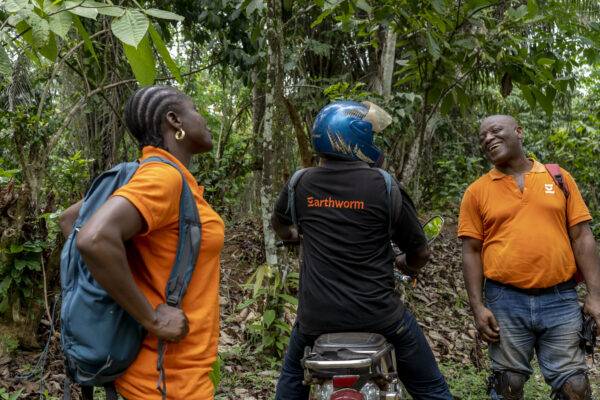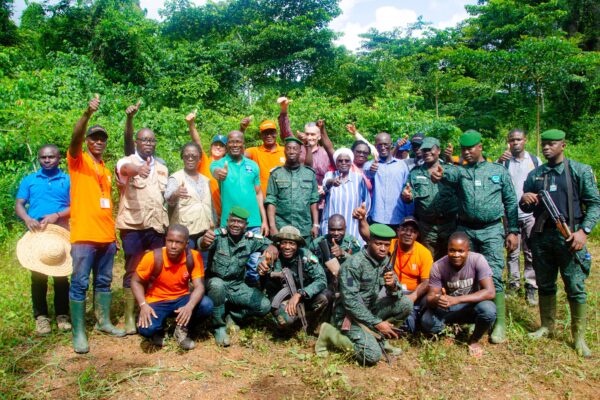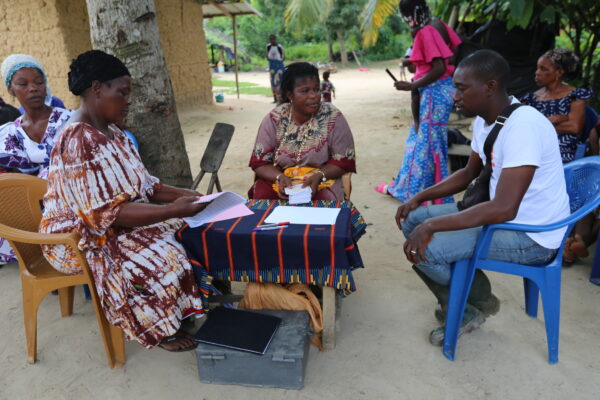New publication from TFT helps communities establish and run their own forest businesses, reach certification and sell to international wood markets.
As of January 2019, The Forest Trust has become Earthworm Foundation.
The global push for supply chain sustainability and transparency risks pushing some of the world’s most sustainable suppliers out of the picture: smallholder farmers.
“Many smallholders risk being cut out of wood supply chains by not distinguishing themselves from illegal loggers,” says Robin Barr from TFT. A new handbook from TFT, ‘Sustainable Community Forest Management; A Practical Guide to FSC Group Certification for Smallholder Agroforests,’ aims to help these smallholders run successful businesses that meet the sustainability requirements of international buyers.
Barr, Senior Manager at TFT and one of the handbook’s authors, explains: “Millions of people around the world rely on smallholders for timber and other daily commodities such as fruit, nuts, coffee, tea and cocoa. Yet there is a very real danger smallholders will be excluded from markets because, despite often employing excellent practices, many have no official accreditation. As a result, some buyers needing to comply with legislation such as the EU Timber Regulation or the US Lacey Act to prove timber legality think engaging with these smallholders is too complex and are instead turning to big players who can more easily become certified or legally verified.”
At the same time, more governments in developing countries are handing land rights to local people, so it’s important that they are empowered to address the sustainability concerns raised by international buyers to really optimise these new opportunities. The handbook helps smallholders legitimise their role in global supply chains.
Smallholder agroforests are the ‘invisible link’ in global wood supply chains, with an estimated 558 million people managing 1 billion hectares of the world’s agroforests. Huge amounts of wood are coming from them, but they’re rarely spoken about in conferences or wood market reports. Nonetheless, they are major wood providers to international furniture and plywood markets, and in many countries have surpassed natural forests in the volume of wood that they are supplying to global markets.
The community forest handbook brings together almost a decade of TFT’s experience carrying out ground-breaking work with such smallholder supply chains in Indonesia, Laos and India to set up traceability systems, document legality of the wood, and achieve FSC certification, as well as setting up long-term viable business structures for the communities. Many of the projects have gone on to achieve global recognition.
Dominic Elson of Trevaylor Consulting, a Jakarta-based rural economy advisor, says: “TFT has been a pioneer in Indonesia, often the first on the scene when a new smallholder forestry enterprise is seeking ways to build a successful and sustainable business in a tough context. For locally-controlled forestry enterprises to succeed, they need to form partnerships with organisations that can link them to markets and help them overcome the many barriers to finding investment. Such partnerships thrive on trust and shared goals, and TFT has proven to be not only a trustworthy partner that is ready for the long haul, but also an effective advocate for sustainable smallholder forestry.” Scott Poynton, founder and executive director of TFT, says: “The more communities there are working together and the more trading power they have, the more we can together really make a difference in supporting them, giving buyers confidence that communities can supply responsible wood. The community handbook is helping to make that possible.”
Further information
Funding and support for the handbook was provided by The Waterloo Foundation, whose environmental program promotes the development of practical, local approaches to protect tropical rain forests and improve the livelihoods and income levels of forest-dependent communities.
558 million people managing 1billion hectares of the world’s forests (Source: Zomer RJ, Trabucco A, Coe R and F Place. (2009). Trees on Farm: Analysis of Global Extent and Geographical Patterns of Agroforestry. ICRAF Working Paper no. 89. Nairobi, Kenya: World Agroforestry Centre.)
Governments handing land rights to local people:
Decentralization of forest management has been a major trend in global forest governance for the past three decades. (Source: Agrawal, A., A. Chhatre, and R. Hardin. 2008. Changing governance of the world’s forests. Science 320:1460-1463, & Ribot, J., A. Agrawal, and A. Larson. 2006. Recentralizing while decentralizing: how national governments reappropriate forest resources. World Development 34:1864-1886. http://dx.doi.org/10.1016/j.wo... is particularly apparent in the developing world: 22% of forests are community-owned or managed. (Source: Rights and Resources Initiative and the International Tropical Timber Organization. 2009. Key data from RRI-ITTO Tropical Tenure Assessment. Rights and Resources Initiative and the International Tropical Timber Organization, Washington, D. C., USA, and Yokohama, Japan.)
More than three-quarters of developing countries and countries in transition are in the midst of experimenting with decentralization of natural resource management (Source: Contreras-Hermosilla, A., H. Gregerson, and A. White. 2006. Forest governance in countries with federal systems of government: lessons for decentralization. Centre for International Forestry Research, Bogor, Indonesia.)


